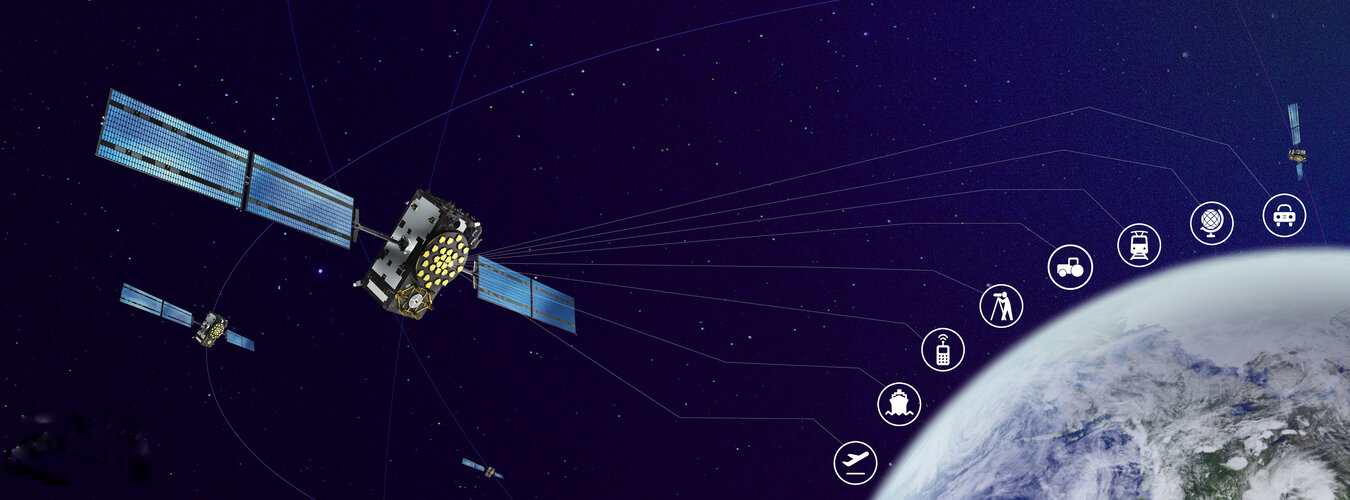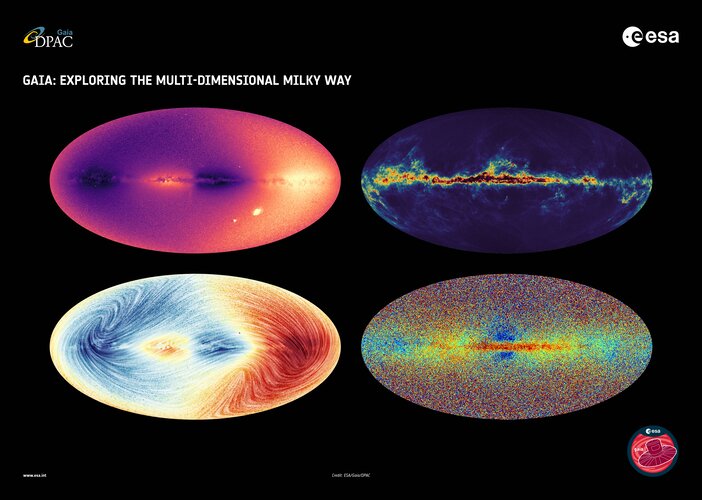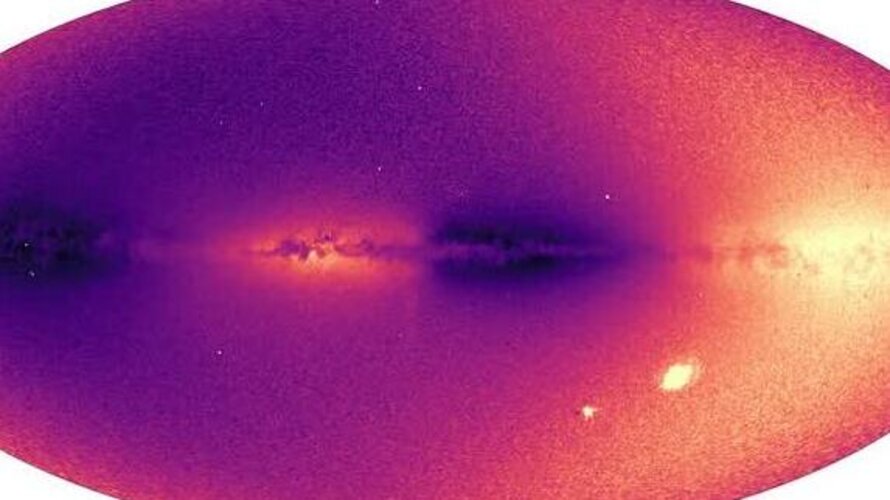
Copernical Team
Galileo – a new tool for science

Every moment of every day, Europe’s constellation of Galileo navigation satellites that ring our planet transmits precisely shaped and timed signals, down through the atmosphere, reflecting back from Earth’s land, seas and ice and extending far out into space, as far as the Moon.
The June Council edition of ESA Impact is online

ESA Impact June Council edition
Great images and videos of two ESA astronauts on the ISS, preparations for the Artemis mission to the Moon, and more
Gaia sees strange stars in most detailed Milky Way survey to date

Today, ESA’s Gaia mission releases its new treasure trove of data about our home galaxy. Astronomers describe strange ‘starquakes’, stellar DNA, asymmetric motions and other fascinating insights in this most detailed Milky Way survey to date.
Gaia data release 3: exploring our multi-dimensional Milky Way
 Video:
00:05:00
Video:
00:05:00
Since its launch in 2013 ESA’s Gaia observatory has been mapping our galaxy from Lagrange point 2, creating the most accurate and complete multi-dimensional map of the Milky Way. By now two full sets of data have been released, the first set in 2016 and a second one in 2018. These data releases contained stellar positions, distances, motions across the sky, and colour information, among others. Now on 13 June 2022 a third and new full data set will be released. This data release will contain even more and improved information about almost 2 billion stars, Solar
ESA centre to develop Europe’s space economy and promote commercialisation

Entrepreneurs, fledgling firms and established space companies are to receive a boost with the launch of the European Centre for Space Economy and Commerce.
NuSTAR marks 10 years studying the X-Ray Universe
 NASA's Nuclear Spectroscopic Telescope Array (NuSTAR) is turning 10. Launched on June 13, 2012, this space telescope detects high-energy X-ray light and studies some of the most energetic objects and processes in the universe, from black holes devouring hot gas to the radioactive remains of exploded stars. Here are some of the ways NuSTAR has opened our eyes to the X-ray universe over the last d
NASA's Nuclear Spectroscopic Telescope Array (NuSTAR) is turning 10. Launched on June 13, 2012, this space telescope detects high-energy X-ray light and studies some of the most energetic objects and processes in the universe, from black holes devouring hot gas to the radioactive remains of exploded stars. Here are some of the ways NuSTAR has opened our eyes to the X-ray universe over the last d Astronomers may have detected a 'dark' free-floating black hole
 If, as astronomers believe, the death of large stars leave behind black holes, there should be hundreds of millions of them scattered throughout the Milky Way galaxy. The problem is, isolated black holes are invisible.
Now, a team led by University of California, Berkeley, astronomers has for the first time discovered what may be a free-floating black hole by observing the brightening of a
If, as astronomers believe, the death of large stars leave behind black holes, there should be hundreds of millions of them scattered throughout the Milky Way galaxy. The problem is, isolated black holes are invisible.
Now, a team led by University of California, Berkeley, astronomers has for the first time discovered what may be a free-floating black hole by observing the brightening of a Terran Orbital concludes Fleet Space CENTAURI-5 bus commissioning
 Terran Orbital Corporation (NYSE: LLAP), a global leader in satellite solutions, primarily serving the United States and Allied aerospace and defense industries, reports that it has completed bus commissioning for the CENTAURI-5 satellite has concluded with nominal health and status checkouts. Tyvak International SRL, Terran Orbital's wholly-owned international subsidiary, designed and built the
Terran Orbital Corporation (NYSE: LLAP), a global leader in satellite solutions, primarily serving the United States and Allied aerospace and defense industries, reports that it has completed bus commissioning for the CENTAURI-5 satellite has concluded with nominal health and status checkouts. Tyvak International SRL, Terran Orbital's wholly-owned international subsidiary, designed and built the Rocket Lab selected by Ball Aerospace to Power NASA's GLIDE Spacecraft
 Rocket Lab (Nasdaq: RKLB) has been selected by Ball Aerospace to manufacture the Solar Array Panel (SAP) to power NASA's Global Lyman-Alpha Imager of Dynamic Exosphere (GLIDE) mission spacecraft planned to launch in 2025. GLIDE is a heliophysics mission intended to study variability in Earth's atmosphere.
The SAP will utilize SolAero by Rocket Lab's high-efficiency, radiation-hardened, qua
Rocket Lab (Nasdaq: RKLB) has been selected by Ball Aerospace to manufacture the Solar Array Panel (SAP) to power NASA's Global Lyman-Alpha Imager of Dynamic Exosphere (GLIDE) mission spacecraft planned to launch in 2025. GLIDE is a heliophysics mission intended to study variability in Earth's atmosphere.
The SAP will utilize SolAero by Rocket Lab's high-efficiency, radiation-hardened, qua Three years of Marsquake measurements
 The InSight mission on Mars is running out of power and most of its functions could be shut down in the months to come. Some have already been deactivated. However, the attached seismometer, SEIS, will remain in operation for as long as possible. ETH Professor Domenico Giardini takes stock of three years of marsquake measurements.
NASA's InSight lander successfully touched down on Mars on
The InSight mission on Mars is running out of power and most of its functions could be shut down in the months to come. Some have already been deactivated. However, the attached seismometer, SEIS, will remain in operation for as long as possible. ETH Professor Domenico Giardini takes stock of three years of marsquake measurements.
NASA's InSight lander successfully touched down on Mars on 